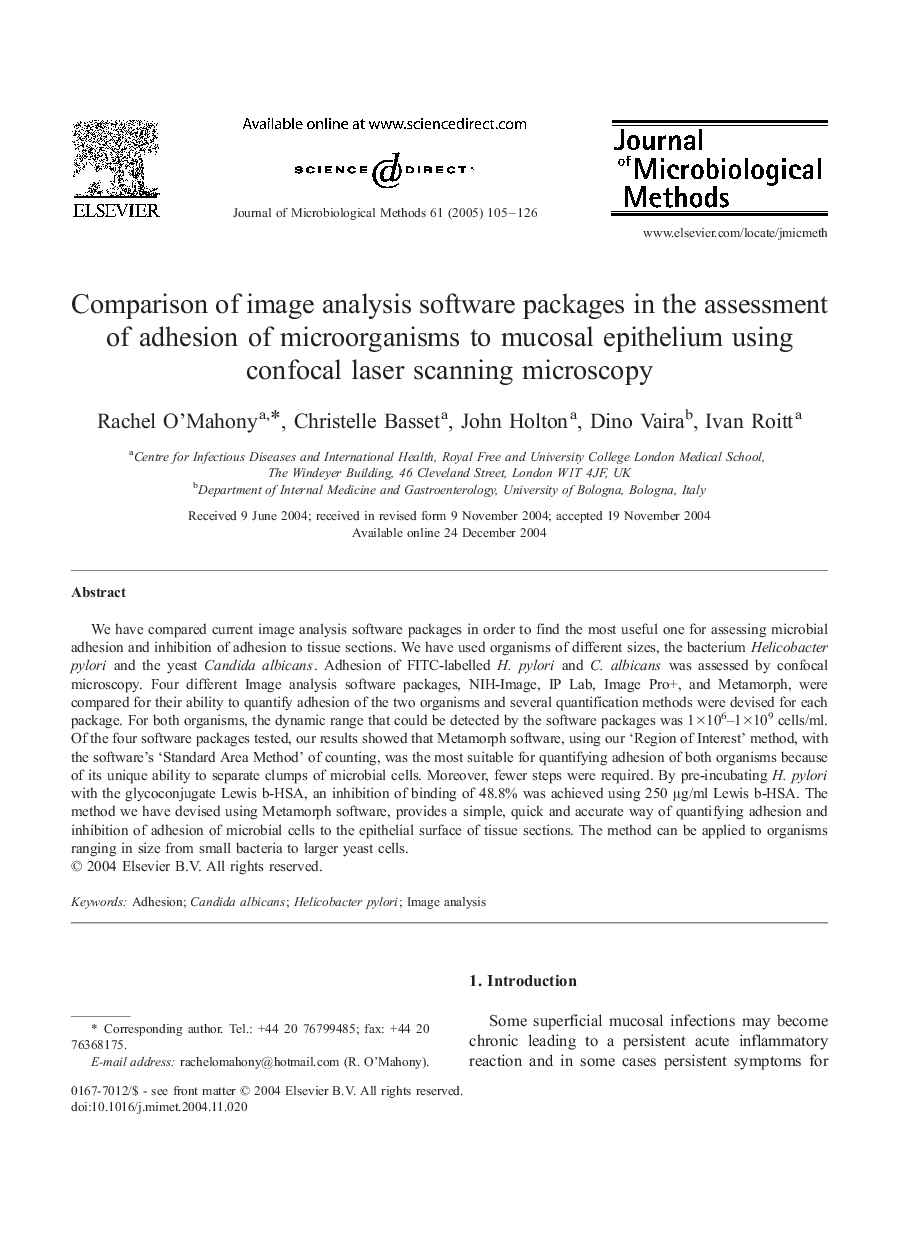| Article ID | Journal | Published Year | Pages | File Type |
|---|---|---|---|---|
| 10889919 | Journal of Microbiological Methods | 2005 | 22 Pages |
Abstract
We have compared current image analysis software packages in order to find the most useful one for assessing microbial adhesion and inhibition of adhesion to tissue sections. We have used organisms of different sizes, the bacterium Helicobacter pylori and the yeast Candida albicans. Adhesion of FITC-labelled H. pylori and C. albicans was assessed by confocal microscopy. Four different Image analysis software packages, NIH-Image, IP Lab, Image Pro+, and Metamorph, were compared for their ability to quantify adhesion of the two organisms and several quantification methods were devised for each package. For both organisms, the dynamic range that could be detected by the software packages was 1Ã106-1Ã109 cells/ml. Of the four software packages tested, our results showed that Metamorph software, using our 'Region of Interest' method, with the software's 'Standard Area Method' of counting, was the most suitable for quantifying adhesion of both organisms because of its unique ability to separate clumps of microbial cells. Moreover, fewer steps were required. By pre-incubating H. pylori with the glycoconjugate Lewis b-HSA, an inhibition of binding of 48.8% was achieved using 250 μg/ml Lewis b-HSA. The method we have devised using Metamorph software, provides a simple, quick and accurate way of quantifying adhesion and inhibition of adhesion of microbial cells to the epithelial surface of tissue sections. The method can be applied to organisms ranging in size from small bacteria to larger yeast cells.
Related Topics
Life Sciences
Biochemistry, Genetics and Molecular Biology
Biotechnology
Authors
Rachel O'Mahony, Christelle Basset, John Holton, Dino Vaira, Ivan Roitt,
